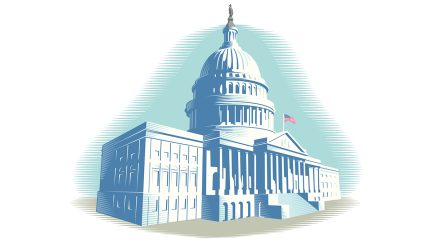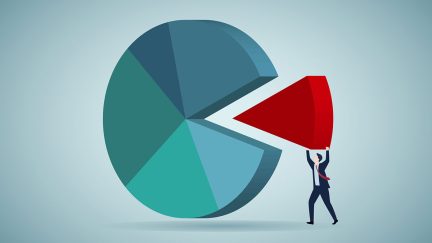Want the latest retirement plan adviser news and insights? Sign up for PLANADVISER newsletters.
Auto Features in Private Sector Plans Could Influence Public Plan Design
Private sector automatic escalation has become commonplace and could incentivize the public sector to do the same, MissionSquare reports.

In the private sector, automatic enrollment and escalation have become common practice, a trend that could start influencing the design of public sector plans in which implementing auto escalation is lagging, according to a new report from the MissionSquare Research Institute.
Approximately two-thirds private sector defined contribution retirement plans incorporate automatic escalation as a way to get participants to save more over time. Additionally, these plans have been increasing their initial deferral contribution rates. A decade ago, only 32% of plans had a default deferral rate of 4% or higher, but now over half (58%) of plans fall into this category. By the end of 2021, 56% of all its plans and 75% of plans with at least 1,000 employees had implemented automatic enrollment.
Part of Secure 2.0, starting in 2025, all new private-sector retirement 401(k) and 403(b) plans are required to automatically enroll participants at a default contribution rate of at least 3% of their salaries. These rates must be annually escalated by 1% until a minimum contribution rate of 10% is reached. Participants can opt out of these plans, and businesses with 10 or fewer employees and churches are exempt from this requirement.
The increased adoption of automatic enrollment and automatic escalation in thousands of new businesses are expected to raise awareness among state and local government officials, according to MissionSquare, which provides retirement plan services to public employees. Many elected officials are likely to participate in private sector plans that already have or are adding such features, the firm’s researchers note. Furthermore, public sector employers may need to incorporate these features into their retirement plans to remain competitive, as employees increasingly expect them.
“The auto-enrollment framework is similar across private and public sector retirement plans,” Irica Solomon, vice president of government affairs and advocacy at MissionSquare Retirement, said via email. “Where they differ are in the nuances of implementation.”
She said when determining the percentage rate to auto-enroll a participant, the state statute includes the direction for plans permitted to offer auto-features and can vary from state to state, whereas ERISA has a ceiling for all private plans. A private plan may make this determination on its own (with their consultants, Board, administrator etc.) A public sector plan can require legislature approval in addition to its Board approval, she notes.
“The private market has truly leveraged the ability to help their workers save and plan for retirement through this feature and the success rate is tremendous,” said Solomon. “The public sector does rely on their lawmakers to institute the same initiatives for their workers and lag behind as a result, but opportunities are increasing.”
She added that the passage of SECURE 2.0 has demonstrated a bipartisan interest in requiring auto-enroll by including a provision that imposed this requirement for any new 401(k) or 403(b) ERISA plans.
“Though requiring these features is difficult at the state or local level, the Research Institute report shows a number of successful case studies implemented through legislative action or agreements with employee unions,” she said. “Many states are looking at improving auto-enroll features in the coming legislative session.”
The report indicates that the adoption of automatic enrollment features in state and local government DC retirement plans has significantly increased over the past 15 years. Seventeen states and the District of Columbia now either require or permit some form of auto-enrollment. However, few state and local governments have embraced automatic escalation, possibly due to government officials’ hesitation to proceed without clear statutory authority.
“Relying solely on their pension for financial security during retirement is no longer a viable option,” Deanna Santana, acting CEO and president of MissionSquare Retirement, said in a statement. “Incorporating automatic enrollment and escalation features into public sector DC retirement plans now is imperative. Supplementing their pensions with DC plan savings helps public service employees attain financial security after a career dedicated to serving our communities.”
The report also reviews the retirement plans of public employees in various states, finding auto enrollment and auto escalation can increase employee savings in deferred compensation plans with relatively little negative feedback of implementation challenges. To achieve these results, the report recommends designing a program that reflects the financial conditions of the employees and employers, collecting data the program’s effectiveness, adding an employer match if feasible, and providing quality financial education to employees.
MissionSquare’s report “Automatic Enrollment and Automatic Escalation in State and Local Government Defined Contribution Plans” was prepared by Paula Sanford, senior public service associate, Carl Vinson Institute of Government, University of Georgia. The report draws information from various research papers, polls, news reports, etc.
You Might Also Like:

403(b) Plans Have Special Considerations When Complying with SECURE 2.0

Answering Questions About SECURE 2.0 Catch-Up Provisions




